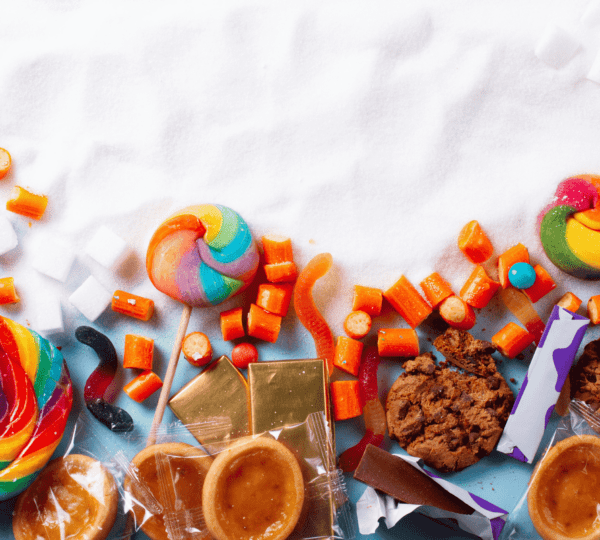
Breaking Sugar Addiction: A New Year Resolution for a Healthier You
Did you know that over 75% of packaged foods in America contain added sugar, contributing to a growing epidemic of sugar addiction? According to the World Health Organization, excessive sugar consumption is a leading cause of obesity, diabetes, and other chronic health conditions. Despite these risks, many people struggle to cut back, often unaware of the addictive grip sugar can have on their daily lives.
If you’ve ever found yourself reaching for sugary snacks to boost your mood or energy, you’re not alone. Sugar’s impact on the brain can create a dependency similar to addictive substances, making it hard to break the cycle. But as we step into the New Year, there’s no better time to reclaim your health by addressing this silent saboteur.
In this blog post, we’ll explore the science behind sugar addiction, its hidden dangers, and practical steps to break free. Ready to start your journey toward a healthier you? Let’s dive in!
Why Sugar Addiction Happens
Sugar addiction isn’t just about liking sweet things; it’s a chemical reaction in the brain. According to an article on Healthline, consuming sugar triggers the release of dopamine, the “feel-good” neurotransmitter, in a way similar to addictive substances. Over time, your brain craves more sugar to achieve the same pleasure, creating a dependency.
Recent studies published in Nature Neuroscience suggest that repeated exposure to high-sugar diets alters neural pathways, making it harder to resist sugary treats. This isn’t a matter of weak willpower—it’s biology working against you.
The Hidden Dangers of Excess Sugar
Eating too much sugar doesn’t just cause weight gain. Here’s what else it does to your body:
- Energy Rollercoaster:
Foods high in sugar cause a spike in blood sugar levels, followed by a sharp drop. This leads to fatigue, irritability, and more sugar cravings. - Heart Health Risks:
Research from the American Heart Association (AHA) shows a strong link between high sugar consumption and heart disease. Consuming excess sugar increases blood pressure, inflammation, and bad cholesterol levels. - Impaired Immune Function:
Sugar can weaken your immune system by impairing the function of white blood cells for hours - Liver Disease: Excessive sugar consumption can lead to fatty liver disease, a serious condition that can damage the liver. after consumption, according to a report by Cleveland Clinic.
- Skin Problems: Sugar can exacerbate skin conditions like acne and premature aging.
- Obesity and Type 2 Diabetes: Sugar spikes blood sugar levels, leading to insulin resistance and weight gain.
Symptoms of Too Much Sugar in the Body
The symptoms of excessive sugar intake can sneak up on you, disrupting your daily life and long-term health. Recognizing these warning signs early can help you make healthier choices before the damage becomes severe.
Some key symptoms to watch for include:
- Persistent Fatigue: Feeling drained even after a good night’s sleep? This could be due to sugar-induced blood sugar fluctuations.
- Frequent Urination: Your kidneys work overtime to filter excess sugar, leading to increased trips to the bathroom.
- Increased Thirst: Coupled with frequent urination, you may find yourself constantly reaching for water.
- Mood Swings: Sugar highs and crashes can leave you irritable or anxious.
- Skin Problems: From acne to premature aging, sugar can take a toll on your skin’s health.
This blog post on: The Symptoms of too much Sugar in your body, will provide For a deeper understanding of how sugar impacts your body
Breaking Free: Step-by-Step Guide
Now that we have looked at the dangers and the symptoms, How can you break-free from sugar addiction?
1. Acknowledge the Problem:
- Honest Assessment: Take a moment to reflect on your sugar consumption habits. Be honest with yourself about the extent of your addiction.
- Identify Triggers: Pinpoint the situations or emotions that lead to sugar cravings. Understanding your triggers is crucial for effective management.
2. Identify Your Sugar Sources
You may not realize how much sugar you’re consuming. Check the labels on:
- Breakfast cereals
- Sauces and condiments
- Drinks, including “healthy” smoothies
- Processed snacks
According to the USDA, added sugars are sneaky, often hiding under names like high-fructose corn syrup, sucrose, and maltose.
3. Plan Your Substitutions
Cravings can derail your progress unless you have healthier options on hand. For example:
- Swap sodas for sparkling water flavored with fresh fruit.
- Replace candy with nuts or air-popped popcorn for snacks.
- Use natural sweeteners like honey or dates in recipes.
- Incorporate fruits into your diet to satisfy your sweet tooth.
- Enjoy soothing herbal teas without added sugar.
4. Balance Your Meals
Focus on balanced meals with protein, healthy fats, and fiber. These nutrients stabilize blood sugar levels, keeping you full longer and reducing cravings. Dr. Mark Hyman, author of The Blood Sugar Solution, emphasizes that eating whole, unprocessed foods is key to breaking sugar dependence.
5. Hydrate and Sleep Well
Dehydration and poor sleep can intensify cravings. Aim for at least 8 cups of water daily and 7–8 hours of sleep. A study from the National Sleep Foundation found that sleep-deprived individuals consume significantly more sugary foods to compensate for fatigue.
6. Gradually Reduce Sugar Intake
Going cold turkey might lead to withdrawal symptoms, such as headaches, mood swings, or fatigue. Start by cutting out sugary drinks, then processed snacks, and finally tackle desserts.
The Role of Support and Accountability
Breaking sugar addiction is challenging, but you don’t have to do it alone. Join online forums or social media groups focused on healthy living. Apps like MyFitnessPal or Sugar Detox Buddy can track your progress and provide motivation.
Enlisting friends or family members to join your journey can also keep you accountable. According to Psychology Today, sharing goals with someone you trust makes you 65% more likely to achieve them.
How Long Does It Take to Break a Sugar Addiction?
Research shows it takes about 21–30 days to break a habit. However, the first week is usually the toughest as your body adjusts. Stay consistent, and remember: small progress is still progress.
Expert Opinions: Is It Worth It?
Dr. Robert Lustig, author of Fat Chance, states, “Sugar is the new tobacco. Reducing its intake isn’t just about looking good—it’s about longevity and quality of life.”
Similarly, nutritionist Joy Bauer emphasizes the cognitive benefits of reducing sugar. “Many clients report clearer thinking, better focus, and fewer mood swings after cutting back on sugar.”
Conclusion: Make This New Year Count
That day on the hiking trail marked a turning point for me. Breaking my sugar addiction wasn’t easy, but it transformed my energy levels, health, and even my mental clarity.
As you embark on this journey, remember: every small step matters. Start by identifying your sugar sources, making gradual changes, and leaning on your support network.
Ready to take charge of your health? Share your experiences or tips in the comments below—let’s inspire each other to stick to this life-changing resolution!
References
- Healthline. (2024). “How Sugar Affects Your Brain.”
- American Heart Association. (2023). “Sugar and Cardiovascular Disease.”
- Cleveland Clinic. (2023). “The Effects of Sugar on the Immune System.”
- Hyman, M. (2022). The Blood Sugar Solution.
- Lustig, R. (2023). Fat Chance.
- Psychology Today. (2023). “The Science of Accountability in Goal Setting.”
- National Sleep Foundation. (2023). “Sleep and Eating Habits.”












